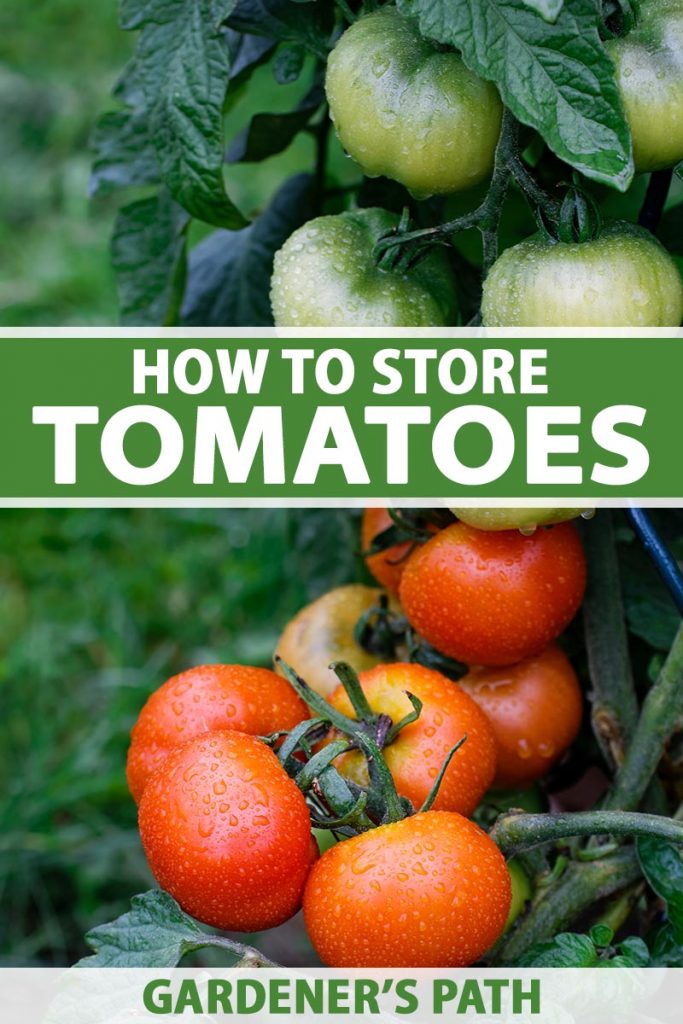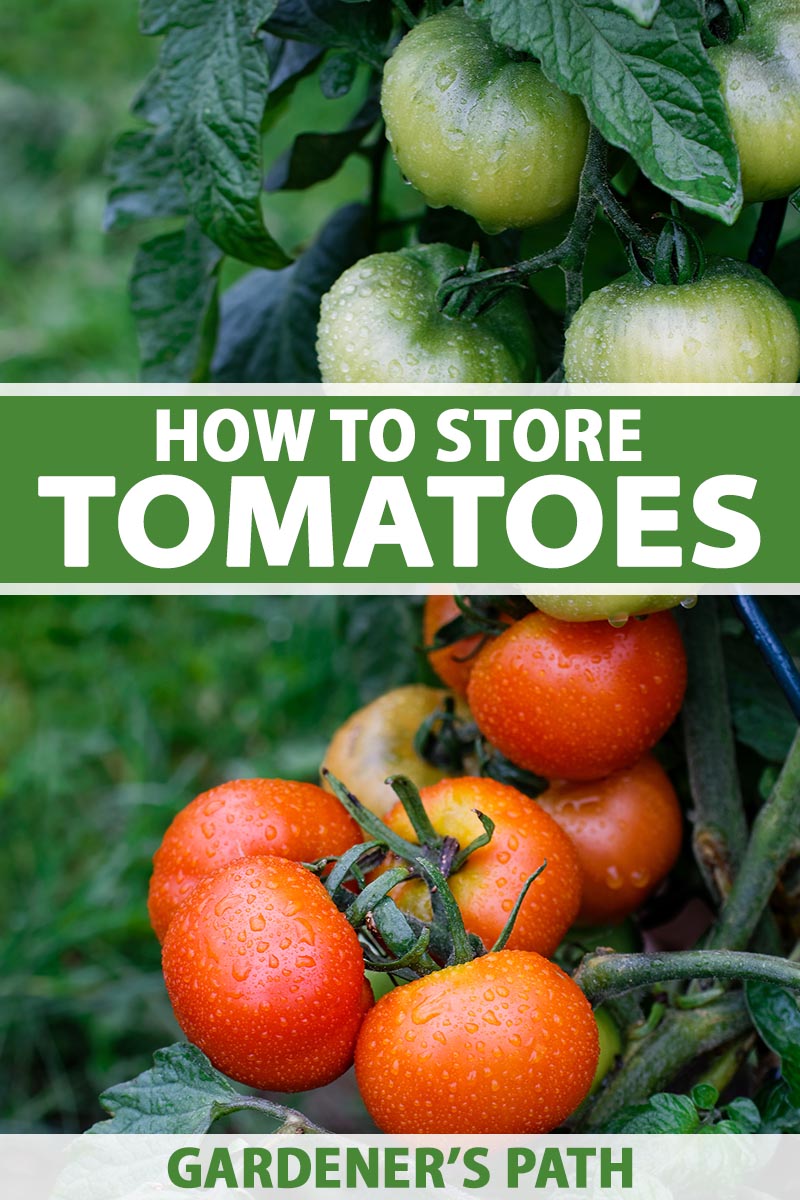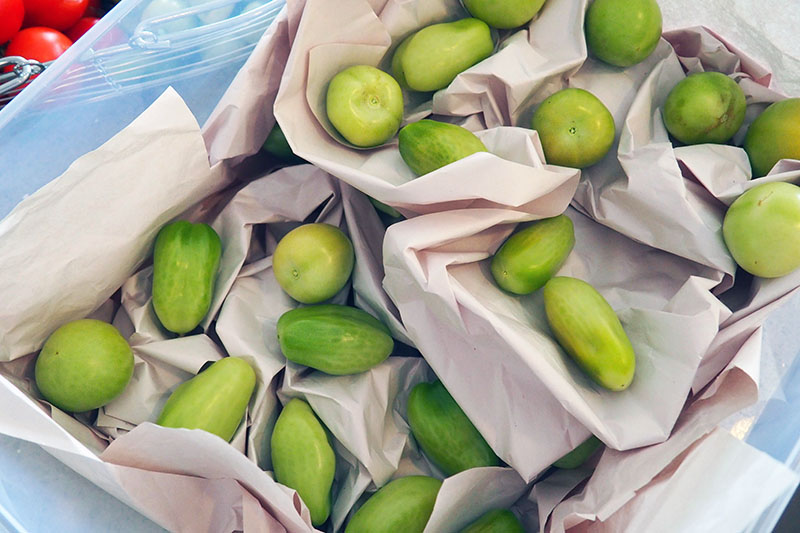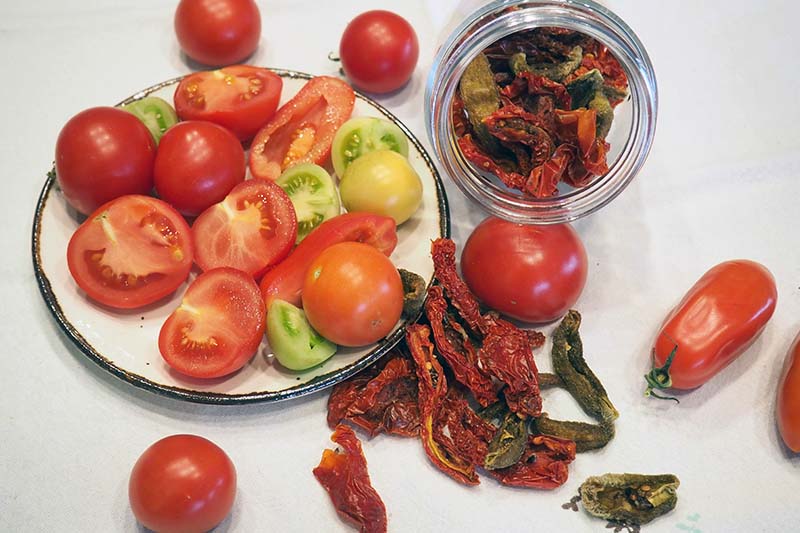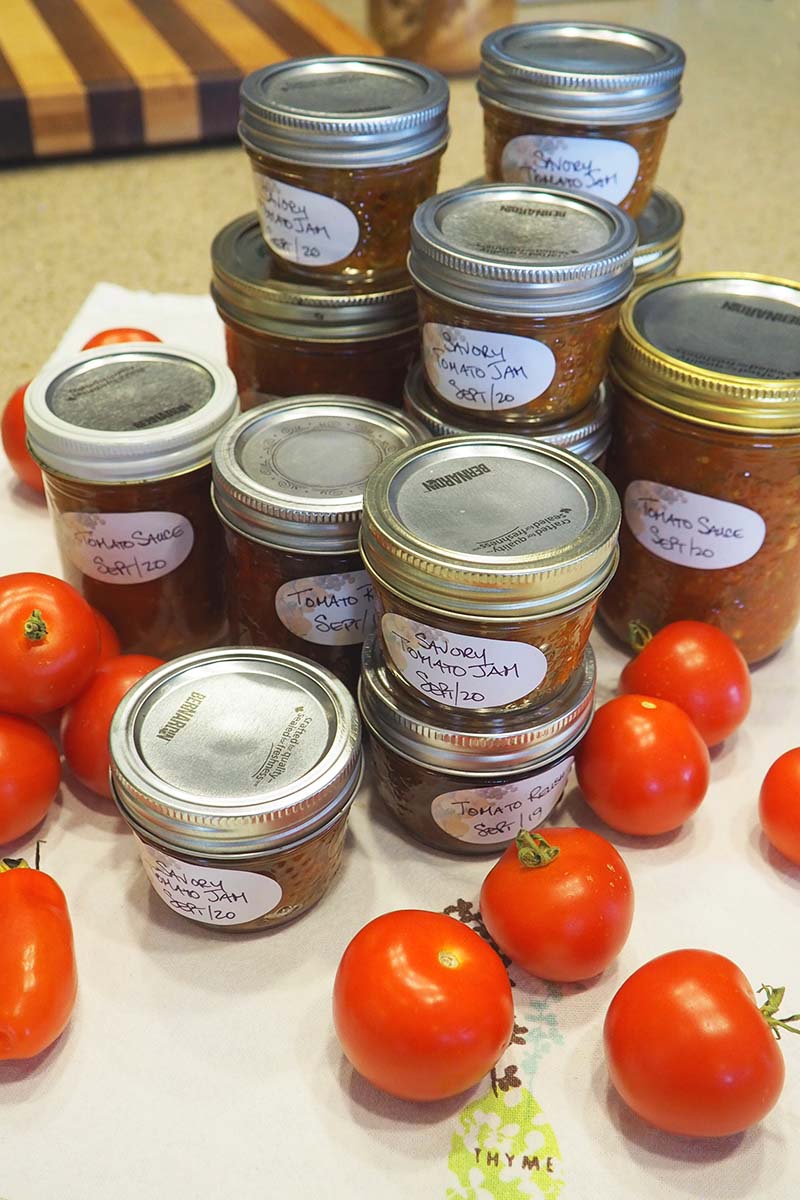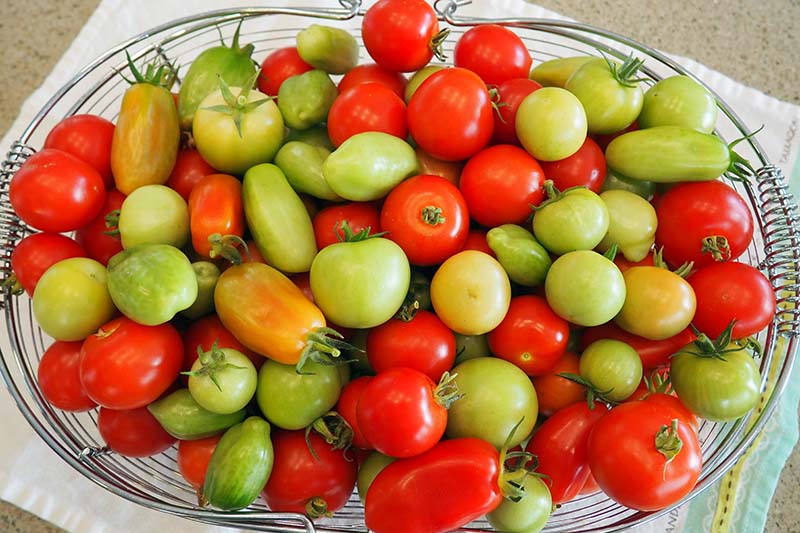We enjoy their ripe red fruit from midsummer on, but they don’t fare well when there’s a chill in the air. Toward the end of the growing season, vine ripening slows and then stops. And while the vines can look spindly at this point, there’s often still lots of fruit in place – green ones, orangey half-ripe ones, and ripe red ones, all at the same time. We link to vendors to help you find relevant products. If you buy from one of our links, we may earn a commission. Box storage is a good option to slowly ripen green ones, and nicely extends the season for fresh fruit. Other options – like canning, dehydrating, and freezing – make smart choices when your crop’s just too large to use it all fresh. Here’s what you need to learn about on how to store your homegrown tomatoes!
Ripening Basics
Being able to ripen tomatoes that you’ve picked depends a good deal on the temperature. And that means how you choose to stow them will be determined in large part on their level of ripeness at harvest time. Typically, green fruits ripen in about two weeks at temperatures of 65 to 70°F. But they’ll take up to four weeks at temperatures of 55 to 60°F. And at 55°F and below, fruits go into stasis with no further ripening. Very ripe fruits can go into the fridge to halt the process, but they should be brought back to room temperature before consuming for the best flavor. If you only have a handful of green tomatoes, they can ripen in a bowl on the kitchen counter. Keep them out of direct sunlight and they’ll gradually change color in a couple of weeks. If desired, adding a ripe apple or banana to your box or bowl of fruit will also accelerate ripening, since these will release ethylene gas. Replace the apple or banana weekly. For more ripening details, read this article on how to make homegrown tomatoes turn red.
Boxed Storage
An open bin or box is a convenient and effective storage receptacle in which to keep green fruit as they ripen and turn red. Here’s what you need to do: The cooler the temperature is in your storage area, the longer the fruit will take to ripen. Suitable locations include cool or unheated basements, cellars, garages, pantries, and shaded porches. Given the right conditions, boxed green fruit can be kept for up to six months.
Dehydrating the Harvest
Dehydrating your crop is another delicious and easy way to store both green and red fruit. Drying concentrates the flavors to an intense depth, retains most nutrients, and develops a satisfying, chewy texture. Tomatoes can be sun-dried, or dried in an electric countertop dehydrator using the following basic process: If you don’t have a food dehydrator, fruit can be dried in the oven as well. To do this, set your oven to 150°F or the lowest setting and place the washed, sliced, scooped-out fruit on a baking tray lined with parchment paper. Watch closely during the last hour of cooking. Check for doneness every 15 minutes to ensure they don’t become crispy. Store dehydrated pieces in an airtight glass jar or resealable container. Dried pieces have a rich flavor and texture as is. But they can also be plumped up and softened by rehydrating in hot water or tomato juice for 20 minutes. Keep in airtight containers in a cool, dark cabinet or cupboard for up to six months, or store in the freezer for up to one year. You can learn more about how to dehydrate tomatoes in our guide. (coming soon!)
Fresh Sauces and Canning Preserves
Canning preserves or making fresh sauces for the freezer are great ways to store your surplus harvest that provides many options. Use ripe red fruit to make chutney, jam, juice, ketchup, paste, sauce, or stewed whole fruit. Green ones add a tangy bite to chutney, pickles, or relish, and make a lively salsa verde! Try this zesty recipe for salsa verde using your green fruit instead of tomatillos from our sister site, Foodal. Or please the kids with this recipe for the tastiest ketchup you can make at home, also from Foodal. Fresh sauces can be stored in the freezer for three to four months. Canned tomato preserves retain their best quality for up to 18 months when stored in a cool, dry, and dark cupboard. Be sure to always can tomatoes using appropriate canning techniques for a water bath or pressure canner. Sterilize jars and assure the acidity of canned products containing tomatoes according to the manufacturer’s directions. If you like the idea of canning, you’ll want to check out this article on 15 of the best canning tomatoes to grow. Plan ahead for a big crop next year!
Freezing
Freezing is another effective way to preserve your harvest. And although the texture changes with freezing (you won’t want to serve them sliced on a salad or sandwich!), they make an excellent addition to cooked dishes such as sauces, soups, and stews. You may freeze your excess harvest one of four ways: For more detailed freezing instructions, see our guide.
Hanging Plants
Another option is to uproot the entire plant at the end of the growing season, rather than picking the fruit. Simply pull up the plants and brush off excess soil from the roots. Hang them upside down in a cool, sheltered location out of direct light to ripen. Plants can also be laid on shelves or in shallow bins. Check weekly and pick fruit as it ripens.
Stretch Out the Goodness
Tomatoes have exceptional flavor and outstanding nutrients that we all love. And even though ripe fruit has a short shelf life, we can still stretch out the goodness of a homegrown harvest. Ripen green fruit in boxed storage or try one of the preservation methods described for long-term storage – and long-term enjoyment! And why not visit our sister site, Foodal for more recipe inspiration? Do you have any favorite ways to store tomatoes? Drop us a note in the comments below and share your tips. And for more tomato knowledge, check out these articles next:
Learn How to Grow the Best Tomatoes How to Grow Tomatoes in Containers How to Grow Tomatoes from Seed
Photos by Lorna Kring © Ask the Experts, LLC. ALL RIGHTS RESERVED. See our TOS for more details. Uncredited photos: Shutterstock.
